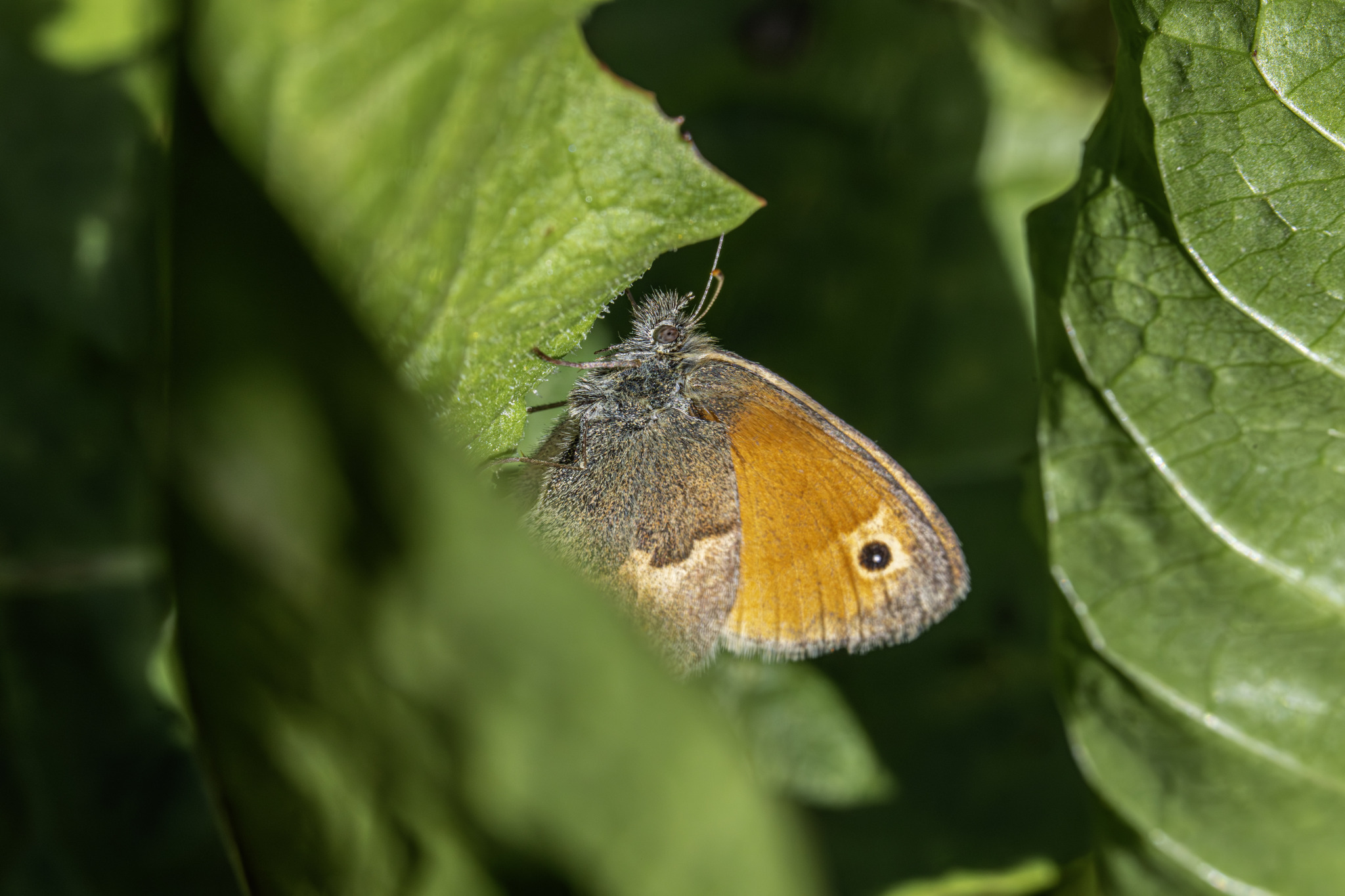The Small Heath (Coenonympha pamphilus) is a widespread and common butterfly found throughout Europe, North Africa, and parts of Asia. Known for its modest size and subtle coloration, this butterfly is a familiar sight in grasslands and meadows. Here is an overview of its characteristics and behavior:
Appearance:
- Size: The Small Heath has a wingspan of about 25 to 30 millimeters, making it one of the smaller butterflies.
- Coloration: The upper sides of the wings are brown with orange-yellow patches and a few small eye spots, which are usually not visible when the butterfly is at rest. The undersides are pale brown with a series of tiny white spots.
- Distinguishing Features: When resting, the butterfly often closes its wings, displaying only the undersides, which help it blend into its surroundings.
Habitat:
- Preferred Habitats: The Small Heath favors open, grassy habitats, including meadows, pastures, grasslands, and roadside verges. It can also be found in heathlands and clearings within forests.
- Geographic Range: This butterfly is widespread across Europe, North Africa, and into parts of Asia, including regions with temperate climates.
Behavior:
- Flight: The Small Heath has a characteristic low, fluttering flight close to the ground, often perching on grass stems or other low vegetation.
- Feeding: Adults primarily feed on nectar from a variety of small flowers, including clover, dandelion, and other meadow plants.
- Activity: These butterflies are usually active from late spring to early autumn, with peak activity in the summer months. They can have multiple generations per year in warmer regions.
Life Cycle:
- Eggs: Females lay their eggs singly on the blades of grasses, which serve as the food plants for the larvae.
- Larvae: The caterpillars are green with faint stripes, and they feed on various grass species, including fescues and bents. They are well-camouflaged among the grass.
- Pupation: Pupation occurs in a loose cocoon among the grass stems. The chrysalis is green and well-hidden.
- Adults: Adults emerge after about two weeks in the pupal stage, depending on the temperature and environmental conditions.
Ecological Role:
- Pollination: As nectar feeders, Small Heath butterflies contribute to the pollination of various flowering plants, aiding in their reproductive processes.
- Prey and Predators: Caterpillars and adults serve as prey for various predators, including birds, spiders, and predatory insects, thus playing a role in the food web.
Conservation Status:
- Population: The Small Heath is not currently considered threatened and is listed as Least Concern by the IUCN. However, local populations can be affected by habitat loss and changes in land use.
- Threats: The primary threats include habitat destruction due to agricultural intensification, urban development, and changes in grassland management practices.
Interesting Facts:
- Camouflage: The cryptic coloration of both the caterpillars and the adults provides excellent camouflage, helping them avoid predation.
- Behavioral Adaptation: The habit of resting with wings closed makes the Small Heath less conspicuous to predators and helps it conserve moisture.
- Temperature Regulation: Small Heath butterflies often bask in the sun to raise their body temperature, which is essential for their activity and flight.
In summary, the Small Heath (Coenonympha pamphilus) is a small but widespread butterfly known for its subtle beauty and adaptability to various grassland habitats. Its role in pollination and as part of the food web highlights its ecological importance. Despite facing threats from habitat loss, it remains a common and familiar sight in many regions.
Visited 880 times, 2 visit(s) today
Views: 1419
Subscribe to the newsletter:
